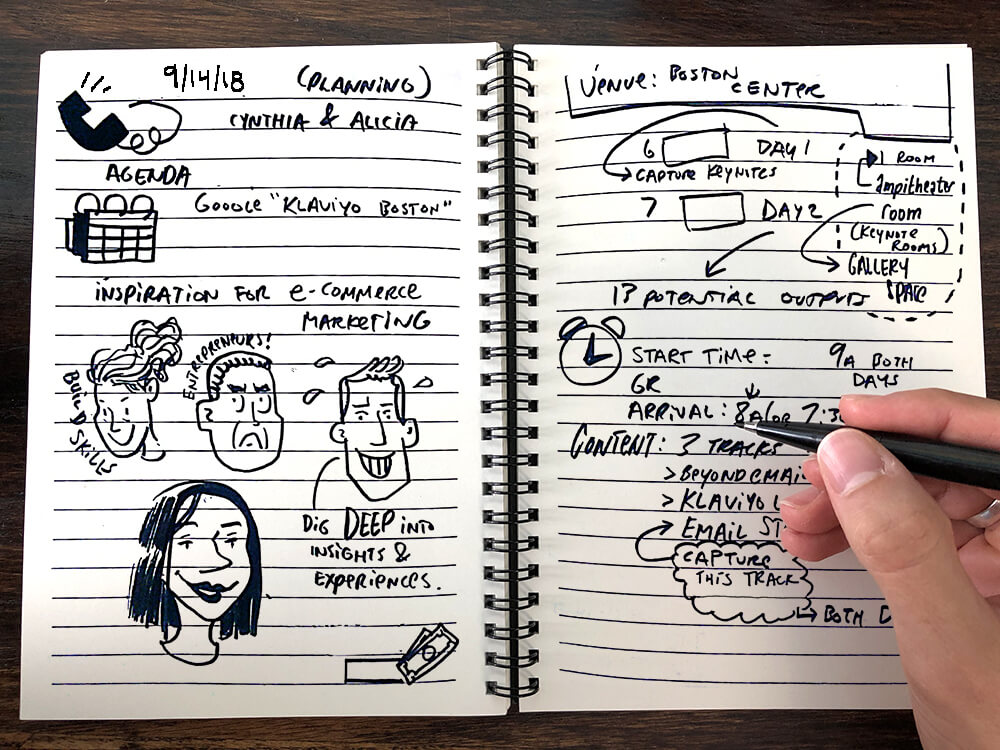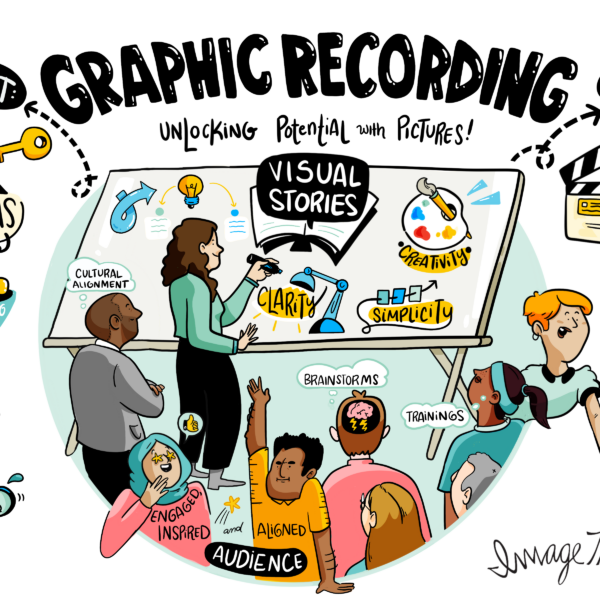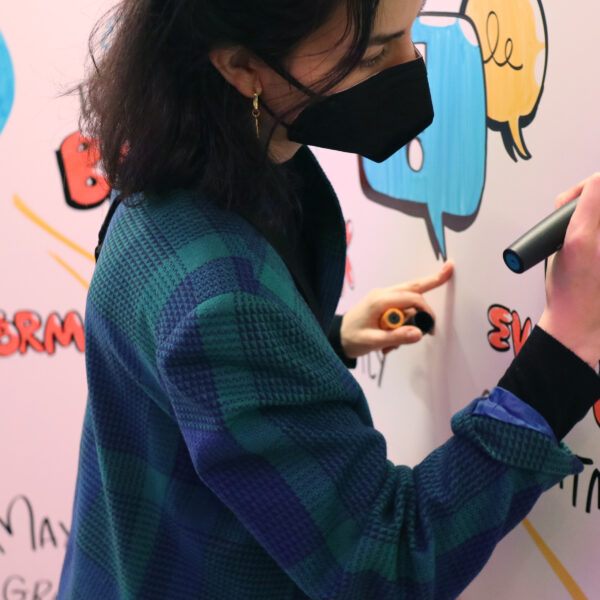Visualizing: A Better Way to Get the Job Done
At ImageThink, we believe the power of visual thinking not only as a tool for meeting facilitation, but as a way to improve office workflows and culture as well.
That’s because the concept we’re founded on—that visual communication can not only ignite excitement but also clarify ideas, solidify shared goals, and inspire concrete action—really works.
It holds true across roles and tasks, and it’s a powerful way of keeping an entire team aligned and motivated, even during busy periods. If you want some new tools to manage client pipelines and busy calendars, and to have a little fun while you do it, read on. Here are a few simple ways to use visual thinking to improve productivity, alignment, and company culture in your own office.

Illustrate Your Calls
We all know that conference calls, even with the best of intent, can be a little… challenging. They’re a staple of modern work and crucial to communication when multiple offices are involved. But a pool of disembodied voices can also lead to missed information. Good note taking is essential if the many hours you spend on the phone each day is going to be worthwhile.
Our graphic recorders oftentimes sketchnote during client calls to jot down crucial information that we later enter into our CRM. Not only are sketchnotes a great at-a-glance mnemonic device; they also keep our creative juices flowing and help us come up with innovative ideas.
Try using simple illustrations—think stick figures, smiley faces, etc—to highlight the bullet points that you really want to remember later on. Want a more in-depth guide to sketchnoting? Check out our tips and tricks for visual note-taking.

Visualize Your Client Pipeline
Managing client relationships and projects in progress can be daunting- full stop. Managing multiple onsite and infographic jobs at once, and the different timelines and owners associated with each, demanded that we get smart about ways to keep abreast of the logistics deluge.
Physically engendering your client pipeline on the office wall is a great way to get your arms around the project and keep tabs on multiple timelines. Try mapping out a large-scale planner on the office whiteboard. Break it into sections with due dates and owners clearly listed, and add notes as the project moves forward. While spreadsheets can perform a similar function, having a large, living, and democratizing support means that the to-do’s get tracked, and real time editing is an interactive team ritual. Not to mention that great feeling of wiping a job off the whiteboard once it’s completed. Whew!
A magnetic client pipeline is another great tool to keep us on track. An entire wall of our office is devoted to visualizing the entire client collaboration process, from inquiry to contracting, and from event day to follow up. Each client gets their own magnet, which our account managers move through the pipeline as each task is accomplished.
Whiteboard Your Team Meetings
Monday morning is when we take time to assess our tasks, progress, and goals before we hit the ground running supporting our creative partners. Recognizing the impact of graphic recording and visual note taking for our clients, we take the same approach for making sure that we are all accountable and ahead of the curve of any challenges and needs that we may have under our roof.
A whiteboard, used with our remote conference tools, can become the anchor for any team discussion. It makes the discussion visible, can keep conversations on track, and has the power to create compass of goals for the coming week.
Who, When, Where? Scribe Your Calendar
Juggling client calls, project deadlines, and internal meetings isn’t all our account managers are responsible for. Staffing graphic recorders on jobs that span the continent and even the globe requires a lot of foresight and a clear view of all the moving pieces involved in getting the right person on the right airplane to the right city.
That’s where a whiteboard calendar comes into play. While digital calendars serve their own purpose, this simple analog tool is an easy, centralized way of seeing a team’s schedule for months at a time. Use simple color coding to indicate job type, staffing, and personnel restrictions like if someone will be out of the office for PTO or client travel. It’s straightforward, easy to change, and extremely helpful, especially during the busy season when you might be managing multiple clients, projects, and competing deadlines.

The Satisfaction of the Checklist: Bullet Journaling
ImageThinkers have different ways of tracking goals, but we do have one method in common: that satisfying feeling of checking off a task! From our finance officer to our office manager, you’ll find notebooks filled with daily tasks listed out by priority.
Try blocking off the last 15 minutes of every day to list out goals for the next. It’s centering, and it means that important to-do items aren’t forgotten overnight. Want to get a little fancier? Try bucketing your task list into the different roles you fill, or the projects you manage, and color coding each one. It will help keep you focused and create a sense of accomplishment when those boxes get checked off.
Want More Great Visual Thinking Tips?
Bring ImageThink in to conduct a workshop for your team. Tracks include visual leadership, leading better brainstorms, and Whiteboarding 101, and you can learn more about these workshops here.



